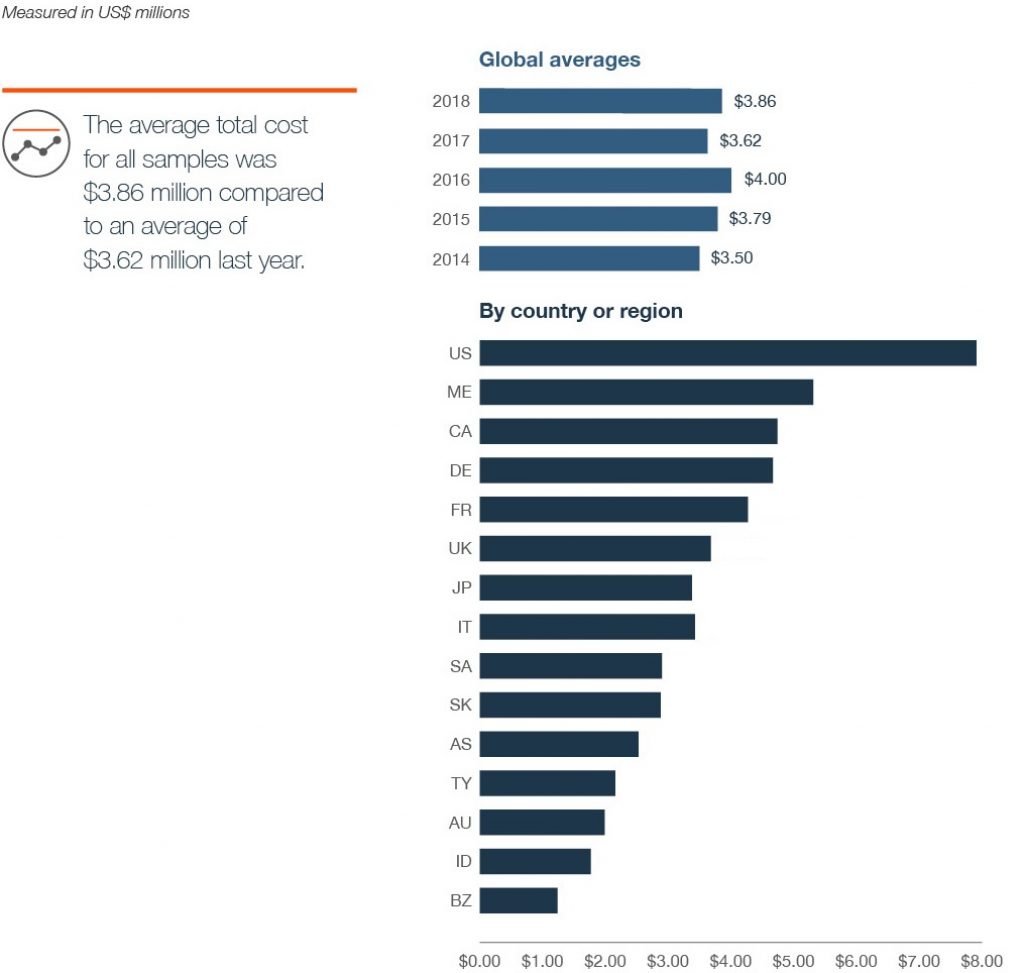
Top Challenges of Web Hosting Industry
The web hosting is evolving at a very high speed. The use of automated functionalities, Big Data and AI has certainly opened the doors to the new opportunities and is fully capable of maximising the efficiency of web hosting industry. However, there are still a number of challenges that need to be answered in order to ensure the streamlined growth of web hosting industry, In order to accelerate its growth it becomes imperative to answer the latest challenge for the web hosting industry. Here are some of the infrastructure and capabilities lags that affect the functionality of a web hosting industry. In this article we will concentrate on the issues faced by data centre of today:
Manual Efforts Affecting Productivity
Presently a significant part of entering and managing data into data centre storage still involves manual efforts. It not only increases the time and complexity but is also exposed to human errors/inconsistencies. Besides many steps of the process involves repetitive or unproductive clerical work that eats into the productive time of the staff thus reducing the RoI on manpower investment.
Challenge: Designing Budget Friendly Automated Systems For Small Players
Replacing the current human involvement with automation technologies can help by enhancing the accuracy and speed. For big players it is not a big deal but to make automation affordable for the small players would be the major challenge. If the solution is implemented without addressing this issue then the small players would be compelled to lag behind their bigger competitors just because of lack of capital and infrastructure. This unfair competition is certainly not something that the industry needs.

Source: securityintelligence.com/ponemon-cost-of-a-data-breach-2018/
Security
Security is the major concern for any data centres as they store the most crucial data of the businesses across the world. Security breaches or data loss are key concerns for data centres.
Challenge (Data Protection)
Adopting the best practices and technologies to discourage the loss of data or misuse of vital login credentials is another major challenge for the data centres.
Scalability
The scalable bandwidth provided by the data centres consumes more power and data transmission thus increasing the cost and reducing the profitability.
Challenge (Maximising scalability without cost burdens)
Offering the clients the maximum benefits of scalability and minimizing the costs is another major challenge faced by the data centres.
Instant Resource Allocation
One of the core responsibilities for any data centre is to instantly allocate the accurate quantity of resources and uptime to different clients as per their changing requirements and the plans they have purchased. It needs availability of the real time stats of power, space, cooling and other physical/Digital requirements.
Challenge: Overall Estimation Technology With Real Time Stats And Alert System
Due to the dynamic nature of data centre the resource availability keeps on fluctuating continuously. Hence static evaluating tools fail to meet the requirements. One needs a strong, in-depth evaluation process that can render the vital stats and data in a live streaming manner. Besides, the system should have the provision to set the automatic alarming facility regarding any immediate resource requirement or managing/refilling the depleting resource level. Developing such evaluation system with all-inclusive features at affordable costs is another major challenge of the industry.
Data Centres And Third Party Providers
As more and more data centres are have to compete with the third party providers , it becomes all the more important for them to minimize the operating expenses and ensure that they are able to get the best RoI out of their investment while at the same time offering the best services to the clients tat the reasonably reduced costs.
Challenge: Minimizing Costs/Resource Consumption And Monitoring The Same
The major challenge would be to find the real status of your resource investment and utilization of resources. It will help you to determine the commercial viability of your data centre resources.
Energy Consumption
Data centres consume massive amounts of energy and it not only increases their cost but also depletes the global inventory of energy. However, the major thing to focus here is the most of this energy is consumed in the wasteful manner as the companies generally use maximum capacity 24X7 for running the facilities. As a result as much as 90% of electricity employed by data enters is actually “wasted”.
Challenge: Designing/Implementing Best Practices To or Energy Consumption
The major challenge is to design the best energy consumption practices for the online companies and get it implemented so as to ensue that the maximum availability and scalability should not facilitate overspending of energy and other vital resources like fuel (used in Generators). Besides the intervention of authorized organization is also important to ensure the required actions for penalizing defaulters and rewarding those who follow the industry friendly policies.
Increasing Resources
Each time the data centre provisions extra resource the cost shoots up and profitability needs to be adjusted. This model doesn’t always work for the local or small data centres. They have capital constraints. The best strategy for term to increase the rate of utilization and add, ore cross consolidation.
Challenge: How it Utilize Redundant Resources
While the data centres offer high scalability to then clients there are the high amounts of redundant resources in data centre ecosystem that remains unused. The major challenge is to identify the bets ways to monitor the unused data and finding various beneficial ways to utilise the data for supporting the key infrastructure requirements. It will not only help in enhancing RoI and increase efficiency but will also help the data centre to enhance the overall productivity,
IoT And New Age Technology
With the introduction f one technology like ioT and machine learning there will be a radical shift in the role management and skill requirements in the data centres.
Challenge: Skill Management
How to recruit monitor ad manage the manpower, and impart new technology training to the old staff and senior and mid level managers so as to enable them using the maximum capabilities s of the new technology without any hiccups or hassle sound the major challenge? Besides the hiring f expert services and leveraging the new supportive infrastructure would b other challenges.
Speed Necessary For Strong Interconnection
Fast speed is the major requirement for strong interconnection across the data centres. But the latency increases with the distance between the data centres thus slowing down the speed and affecting the interconnection strength.
Challenge: Reducing Hardware Induced Latency
In this scenario the major challenge would be to find the reliable, sustainable and economical substitutes and proper design practices for reducing the hardware induced latency and transmission impairment issues.
Volume of Data Sets
The data centre efficiency is affected by the average amount of data sets that travel to and fro the data centres. On an average this volume is massive-measuring in hundreds of GBs/TBs! By reducing this amount the efficiency of data centres can be improved. By enabling the high transmission rates over almost any distance the data centre providers can answer the issue.
Challenge: How to Teduce The Volume of Data Leaving/Entering Data Center
The major challenge would be how to put the required provisions and practices in place to materialise the above concepts. Besides, the consensus between different data centres and role of some authorised organisation with adequate powers is also necessary. ..
IaaS and PaaS Cloud Services
The use of IaaS and PaaS cloud services is increasing and the trend is tend to rise IaaS and PaaS offer a hybrid IT ecosystem to the enterprises/vendors but the significant share of computing power remains with the providers
According to a study by Gartner, by the 2020 the IaaS and PaaS cloud providers will emerge as the major entity for selling/deploying data and computing services.
Worldwide Public Cloud Service Revenue Forecast (Billions of U.S. Dollars)
| 2017 | 2018 | 2019 | 2020 | 2021 | |
| Cloud Business Process Services (BPaaS) | 42.6 | 46.4 | 50.1 | 54.1 | 58.4 |
| Cloud Application Infrastructure Services (PaaS) | 11.9 | 15.0 | 18.6 | 22.7 | 27.3 |
| Cloud Application Services (SaaS) | 60.2 | 73.6 | 87.2 | 101.9 | 117.1 |
| Cloud Management and Security Services | 8.7 | 10.5 | 12.3 | 14.1 | 16.1 |
| Cloud System Infrastructure Services (IaaS) | 30.0 | 40.8 | 52.9 | 67.4 | 83.5 |
| Total Market | 153.5 | 186.4 | 221.1 | 260.2 | 302.5 |
BPaaS = business process as a service; IaaS = infrastructure as a service; PaaS = platform as a service; SaaS = software as a
Source: gartner.com/newsroom/id/3871416
Challenge: Appropriate Integration and Streamlined Management in Hybrid Ecosystem
The major challenge for the enterprises and data centres would be deciding the appropriate integration of the on-premise and off-premise infrastructure resources and ensuring the streamlined task management and uninterrupted operations in the hybrid ecosystem.
Containers, Microservices and Applications
In microservices the applications are developed in the form of a suite containing small services. As the applications run as separate processes, it allows for independent deployment and management of microservices. The communication mediums utilized by these applications are the lightweight mechanisms based on network. After being implemented in the containers the microservices have little scope of interacting directly with the underlying OS.
Challenge: Managing Separate Infrastructure
Containers, microservices and applications have separate infrastructure requirements in terms of compute, network and deployment resources. It is a complex task to deploy, allocate and manage the varying requirements for each service. The major challenge in this scenario is can there be a uniform, single infrastructure to for supporting all these diverse forms of applications (Physical, virtual and container-based)?
Business-Driven IT
Traditional IT processes used by the small business units are less efficient and more time consuming. That’s why an increasing number of such business units rely on the third party IT services (like online cloud services) to enhance the speed and efficiency of their business operations. Termed as Shadow IT this service is quick, more efficient and is not limited by the physical infrastructure of the concerned business unit.
Challenge: Determining and Deploying Best Security Practices
However, using online cloud services for mission critical business documents and other vital information may not align with the ideal security requirements. Being third party service providers it is not possible for the IT team to monitor and control the security of the data and documents beyond a limit. The major challenge therefore is what role should be played by the IT department in ensuring the best security of business critical data and documents and can there be a better personalized protection ecosystem to manage the security and privacy of the critical data more efficiently throughout the entire processes?
IT as a Broker of Services
In order to ensure the ideal delivery process IT resources with a keen focus on accuracy and timely supply the corporate IT should adopt IT as a service model that can be simplified as Broker of IT services. This model has several benefits like minimized upfront investment, predicable expenses with a greater financial transparency, efficient monitoring and quick scalability.
Challenge: Finding Best Infrastructure to Support
The major challenge however is to ensure the new infrastructure requirement for enabling this model.
Capacity Gaps
Many businesses don’t use the entire amount of data resources that they have purchased from both on-premise and off premise providers. While there are streamline practices for monitoring uptime and availability, the reliable provision for monitoring the consumption and presence of various other resources still needs to be improved. Just concentrating on availability and uptime is not enough. For the wholesome evaluation of demand and supply they need to pay a keen attention on utilization, capacity and density.
Key Challenges: Evaluating and Enhancing Utilization and Maximizing RoI
Efficient monitoring of overall resource utilization, ensuring maximum RoI by enhancing utilization for supporting key aspects of data centre, and minimizing the operating expenditures would be 3 key challenges for the IT leaders.
Multiple Vendors
The IT environment comprises of various hardware and software resources that are sourced from various. Implementations and updating a wide array of resources becomes a complex task. Besides, you need diverse means, expertise and training sessions to manage the different resources. Time-specific requirements for every resource like servicing; updating or license renewal further increases the administrative burden.
Challenges: Finding Sole Vendor for Different Resources or Employing Automated System
The two major challenges for an enterprise are- can there be a uniform vendor to fulfil your entire or key resource requirement (digital and physical) to simplify the purchase, management and renewals
Secondly there any automated process that can help in streamlining the deploying of managing the different resources and facilitate their coordinated functionality.
Hybrid/Cloud Ecosystem
While the hybrid cloud ecosystem enhances the capabilities of uses enterprises, they also introduce additional channels that might be used by the smart hackers to sneak in and steal your data.
Challenges: How to Utilize Best Security Tools
Especially with the rising number of security threats and cyber attacks it becomes very important to ensure that how to choose the reliable securitises and deeply them for enjoying maximum security without compromising on the accessibility or performance. How to choose the ideal security tools and how to deploy them appropriately to reaffirm the maximum security your critical data even in the clouds are 2 major challenges for the IT leaders.
New Age Applications
For last several years the use of new age applications like Big Data, IoT and Artificial intelligence is fast increasing in sophisticated a grade data centres. It has some impact on the designed management of data enters and can multiply its capabilities.
Challenges: Increasing the Infrastructure Capabilities to Support New Applications
It brings 2 challenge the first challenge is that this new age technologies still prohibitively costly and cannot be afforded by the small data centres. So it can offer undue advantage to the bigger players if the industry while limiting the competitive potential of small players and compelling to lag behind their bigger counterparts just because of lack of capital and manpower. How can the small players are offered an equal footing and how can the infrastructure be upgraded to meet he resource requirements of these sophisticated applications like big data, and AI.
Hyperconverged Infrastructure
While Hyperconverged in infrastructure are said to offer a reliable solution for all applications/workloads there is still much to desire when we look at the gap o demand and supply. Besides, the rigid architecture of many solutions requires the minimum infrastructure capacity (RAM, CPU etc.) irrespective of the client requirements. Hence a client needs to pay for a specific inventory of resources just for supporting Hypercoverged infrastructure even if ethical resource requires are much lower (compete storage and memory)
Challenges: Redundant Resource Purchase and Picking the Most Ideal Solution
You are required to buy specific blocks of resources that lime your capability to purchases the exact about d resources that you really require. Besides picking the most ideal HCI suiting yr individual business needs Is another major challenge for the providers?

